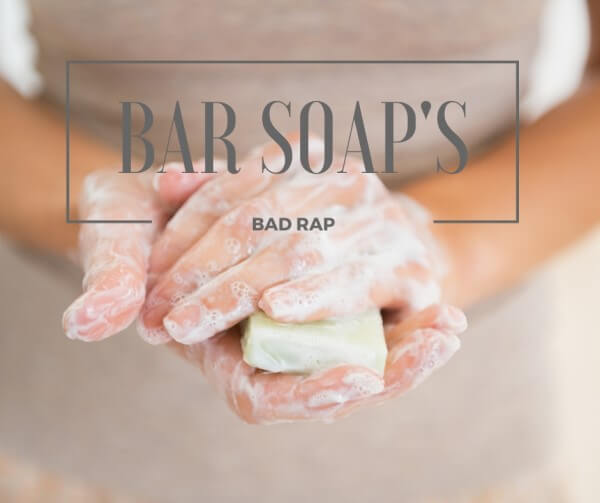An in-depth analysis by market intelligence agency firm Mintel reported that bar-soap sales in the U.S. declined 2.2% from 2014 to 2015 against an overall sales increase of 2.7% in the broader bath-and-shower category. Further, according to the report, the percentage of households using bar soap dropped five percentage points between 2010 and 2015 from 89% to 84%.
What's causing the market for bar soap to continue to fall?
A bad rap among millennials it doesn't deserve.
"Almost half (48%) of all U.S. consumers believe bar soaps are covered in germs after use, a feeling that is particularly strong among consumers aged 18-24 (60%), as opposed to just 31% of older consumers aged 65+.’"
But the science didn't bear that out. The researchers in one study actually contaminated bar soap with bacteria, only to find that the bacteria wasn’t transferred during hand washing.
Washing With Contaminated Bar Soap Is Unlikely To Transfer Bacteria.
Abstract
The FDA has come out advising consumers not to use anti-bacterial soap because it assists in creating microbes that are increasingly immune to agents used to kill them.
Millennials also appeared to prefer the convenience of what they think of as liquid soaps. They're not messy, they don’t slip out of your hands, they don’t require a soap dish. But as we reported in this blog post, it may not be "soap" at all. That "body wash" is likely to be a liquid detergent packed with drying chemicals, surfactants, and preservatives.
We also know millennials are conscious consumers.
A recent Nielsen global online study found that millennials continue to be most willing to pay extra for sustainable offerings. The carbon footprint in general is 25% more for liquid cleansers than bar soap. Consumers use almost 7 times more liquid soap (2.3 grams) than bar soap (0.35 grams).
Science Advances reports that an estimaged 6.3 billion tons of plastic waste have been produced globally since 1995, but only 9% was recycled, as 12% was incinerated and the other 79% ending up in nature or landfills.The increasing awareness of plastic pollution moved consumer preference for more environment friendly packaging beyond a trend to a movement of the whole beauty industry. Mintel reported ethical packaging was the 6th top claim appearing among New Product Developments (NPD) in the personal care sector throughout 2018.
A Comeback Story
After a decline in market share over a decade, 2018 showed bar soap making a comeback with sales increasing by 3%. Bar soap is now growing more quickly than the liquid or gel segment of the personal care market. Much of the increased demand for bar soap is coming from the higher end of the market, as luxury toiletry brands. There are so many reasons to love a good bar of handcrafted soap. Its luxury ingredients like avocado oil, mango butter and more. Its lighter carbon footprint. Our minimal packaging is about as green as any product packaging comes.
Artisan crafted soap is the best way to gently cleanse your skin of dirt, viruses and bacteria, and is a better choice for conscious consumers.


